Buy Tiago Forte – Building A Second Brain V3 (Updated Content) Course at GBesy. We actively participate in Groupbuys and are committed to sharing knowledge with a wider audience. Rest assured, the quality of our courses matches that of the original sale page. If you prefer, you can also buy directly from the sale page at the full price (the SALEPAGE link is directly provided in the post).
 Why organization and collaboration are the two missing links in most people’s creative process – and how adding them in can double your creative output File Size: 502.49 MB
Why organization and collaboration are the two missing links in most people’s creative process – and how adding them in can double your creative output File Size: 502.49 MB
Tiago Forte – Building A Second Brain V3 (Updated Content) course with special price just for you: $999 $86
Tiago Forte – Building A Second Brain V3 (Updated Content)
Do you consume tons of interesting information, but feel like it’s not leading to meaningful results in your life?
Discover how having a Second Brain is helping people around the world save their best ideas, organize their learning, and dramatically expand their creative output
Course Curriculum
A comprehensive curriculum on harnessing the full power of your ideas
Unit 1: Introduction to the Course
• What to expect: schedule, roadmap, communications, and the 3 pillars of the methodology
• Why organization and collaboration are the two missing links in most people’s creative process – and how adding them in can double your creative output
• Idea Management: the new path to produce 10x results with 1/10 the effort
• The secret of Strategic Laziness: the real story of how great thinkers work
• Take an 11-point quiz to score your current note-taking skills
Unit 2: Organizing for Insight
• How to turn your digital notes into “thinking tools” that allow you to access brainpower you didn’t even know you had
• Feeling unorganized? How a simple technique called PARA will enable you to organize your entire digital life in minutes
• The 8 must-haves for any digital organizing system, and how to apply them
• A little-known distinction – between micro-projects and areas of responsibility – that can completely revolutionize your productivity
• Banish Information Overload using the Magic Number 4 – a helpful constraint to preserve your working memory
• Discover the incredible power of an up-to-date Project List, with in-depth feedback and guidance on how to create one for yourself
Unit 3: Digital Cognition
• The 4 essential requirements that any good digital notes app MUST have
• How to amplify the single biggest opportunity for making new connections without spending more time or effort: Productive Randomness
• Learn how a simple principle from Information Science called “stigmergy” explains how to effectively manage information
• A new way of working using “slow burns” instead of grueling slogs – people who miss this are doomed to suffer from Information Exhaustion
• What the Feynman Method can teach us about “punching above our intellectual weight”
• Find out how the best note-takers throughout history built up their intellectual capital using compounding gains
• Transform raw material into knowledge ammunition: how to use digital notes to form a valuable body of knowledge for a side project, career advancement, or new business
• Identify your personal learning priorities using the Feynman Method, a simple exercise created by a Nobel prize-winning scientist to permanently improve your reading and learning for years to come
Unit 4: Progressive Summarization
• Have trouble finding your notes when you need them most? A counter-intuitive technique called Progressive Summarization will help you distill them down for easy retrieval
• Understand the pros and cons of organizing your notes by tag, by notebook, or by project, and the best approach based on our 10 years’ of experience
• Don’t have time for more research? Develop the skill of balancing compression and context to increase the return-on-investment of your note taking
• Strategic laziness over rigid rules: note-taking strategies that leverage human nature, instead of fighting it
• How to design individual notes for “glanceability” and instant recognition for your Future Self
• The amazing benefits of designing your own Personal Information Landscape
• Practice Progressive Summarization on your own notes, with feedback from instructors and peers
Unit 5: Maximizing Return-on-Attention
• Explore the fascinating science behind “transient hypofrontality”: how to maximize the mental state of flow for higher performance, enjoyment, and learning
• Understanding how to minimize the impact of setup costs (environmental, mental, and emotional) on productivity
• How Intermediate Packets can completely transform your approach to productivity
• Become interruption-proof: placeholding, chunking, and reusability as potent sources of leverage for knowledge workers
• Knowledge Artifacts: how to externalize your thinking and accelerate your learning using concrete deliverables
• Turn your notes into a new Knowledge Artifact especially designed to generate valuable, targeted feedback from your peers
Unit 6: Just-In-Time Productivity
• Learn Just-In-Time Productivity – the new, far more effective way of working that becomes possible once you have a Second Brain
• 5 ways to leverage your ideas to leapfrog your peers, skip the corporate ladder, and become a leader in your field
• Divergence and Convergence: use groundbreaking ideas from the world’s top designers to escape any creative roadblock or dead-end
• Equip yourself with 16 Workflow Strategies – proven thinking tools
• Banish procrastination forever using the Archipelago of Ideas technique to instantly add structure to any creative project
• Learn a new way of adding structuring to your ideas just-in-time, to produce results quickly, efficiently, and right when they’re most needed
• How to massively accelerate your learning using idea capture tools and quick feedback loops
• Select and try out 3 of the 16 Workflow Strategies on one or more of your projects or deliverables
Unit 7: Workflow Canvas
• Step-by-step walkthrough to design your very own Second Brain, customized to your needs and goals
• Get feedback on further areas for improvement, based on the exercises you completed in the course
• Explore dozens of examples, case studies, and downloadable templates to make implementing this system as easy as possible
• Complete the Workflow Canvas to choose the tools, techniques, and strategies to integrate into your own workflow
Get Tiago Forte – Building A Second Brain V3 (Updated Content) download
Unit 8: The Big Picture
• Information Overload? How Container vs. Stream Thinking is the mindset you need to thrive in a world of information abundance
• Understand how to cultivate situational awareness and curation as the key skills required to navigate streams of information
• Strengthen your creative confidence by borrowing principles from history’s most prolific creators and artists
• Identifying and overcoming the most common limiting beliefs we encounter around productivity, thinking, and learning
• The Perspective Era – why the future of work will be dedicated to interpretation and persuasion based on your unique point of view, and what you can do to prepare
• Start with Abundance: a different take on creative output that starts with sifting through interesting ideas, instead of sitting down to a blank screen
• Harnessing the full potential of digital notes: how to integrate Idea Management into your daily routine
• The coming era of Idea Management, and how to prepare yourself to thrive within it
Frequently Asked Questions
Everything you need to know before enrolling
What is this course about?
Building a Second Brain is about organizing your ideas, not as an end in itself, but to support creative work and give you the confidence to tackle more ambitious, more fulfilling projects. It is about fully harnessing the potential of your knowledge, so it sticks and translates to meaningful results in your life. Instead of being merely “interesting insights” that are here today and gone tomorrow.
Instead of talking about abstract concepts, I’ll show you a practical approach you can implement step by step, while also explaining the underlying principles that can be applied across your digital tools.
The promise of the course is that “You will learn how to capture, organize, and share your ideas and insights using digital notes, with a systematic approach that you trust to support creative breakthroughs in your work.”
Check out how previous participants summarized the course in a tweet.
Are there any prerequisites for this course?
Although there are no official prerequisites, I expect you to be reasonably fluent in using computers, and for the examples, you’ll need to know the basics of how to use Evernote.
I recommend Evernote’s free Quick Start guide for a brief introduction to the software. I also have a short tutorial at the beginning of the course curriculum with the basics.
I’m not an entrepreneur, freelancer, or executive – is this course right for me?
Hell yes.
The silos that once separated these professions are breaking down. We are all a startup of one now.
Even the largest companies are looking for “intrapreneurs” who can lead “internal startups.” Even the most secure employees need to develop a body of knowledge to leverage for their next career move. And it never hurts to have a side project or extra income stream in these uncertain times.
In Building a Second Brain, we’ll dive into how to create a trusted system for collecting and organizing all the best ideas, insights, facts, quotes, and research you encounter. A system that has been tested by some of the top productivity experts in the world, and adopted by more than a thousand students. A system that just works.
I can’t think of a better way to jumpstart an early-stage career than starting a collection of notes that compounds and grows over time. Just like financial investing, investing in your knowledge benefits tremendously from starting early.
Not to mention, you’ll be learning alongside standout performers in the world’s most ambitious and interesting fields.
I’m an experienced researcher, businessperson, or content creator – do I have anything to learn here?
I’ve found that people who “manage ideas” for a living have some of the most profound breakthroughs from taking this course. Partly because we are shedding light on assumptions and habits that they have never thought to question. Equally important, they often find helping fellow learners understand knowledge management gives clarity to their own work. That’s why social learning works so well for all involved!
Knowledge management is a very new field, and there is no other program out there that addresses it as comprehensively as this one. My life’s work has been tracing the deepest underlying principles all the way to the most practical applications, and training people in how to master both ends of the spectrum.
What kinds of results do people achieve after learning this system?
Graduates of this course walk away with a wide variety of benefits, from reduced stress and indecision to dramatically higher levels of creative confidence and reaching goals they never thought possible. But I’ll let them speak for themselves.
How is this different than GTD (Getting Things Done)?
GTD is a productivity method created by David Allen, and popularized in his best-selling book Getting Things Done. In my first online course, Get Stuff Done Like a Boss, I teach students how to implement this method, and it’s been a big influence on me and my work.
Building a Second Brain builds on and extends the GTD philosophy to encompass not just tasks, but all the other kinds of digital information you have to keep track of: the notes, files, bookmarks, photos, quotes, and research you use to do your work. It follows the same principle – keep everything in a trusted place outside your head – but applied to a much broader range of material.
Although the courses are related, it isn’t necessary to take Get Stuff Done Like a Boss before Building a Second Brain. They address different subjects and each stands on its own.
Here’s a more comprehensive article that explains how the two methods are related: Getting Things Done + Personal Knowledge Management.
Why haven’t I heard of this before?
We get this one a lot.
One reason is that we’re relatively new – the first cohort launched in January 2017. We’re working hard to get the word out, but just getting started!
The second reason is that, until recently, the practice of knowledge management was limited to academics and researchers. Fields such as Personal Information Management (PIM), Personal Knowledge Management (PKM), and Digital Asset Management (DAM) have been around for decades, but haven’t really been accessible to the rest of us.
In creating this course, I read countless academic papers and research reports, so you don’t have to. I borrowed the very best techniques from these disciplines, and combined them into an integrated system designed for knowledge workers to use day to day.
Which kind of software do you recommend?
Although the examples I show are for the popular digital notes app Evernote, all of the methods I teach can be implemented in virtually any software. Past students have built their Second Brain in such apps as Microsoft OneNote, Google Keep, Apple Notes, Bear, Notion, Milanote, Arena, Emacs, and many others.
Don’t worry! I have recommendations for which of these is right for you, plus a dedicated thread for each of them where active users talk about their experience and answer questions.
I do have one strong recommendation: that you stick to the category of “digital notes” apps for your Second Brain. For more details on why, read my article The Case for Digital Notes.
What if I don’t use Evernote?
None of the foundational concepts I’ll be teaching you depend on Evernote or any other particular program to work. I’ll be using Evernote as an example, to be able to show you a real working system, instead of speaking in generalities.
But please note that all the examples, case studies, and templates are exclusively in Evernote, and we cannot officially support any other program you decide to use.
How much time will this take?
The course is designed to take 5 weeks from beginning to end. Although you’ll have access to the complete curriculum from Day 1, and could thus take it much faster, it’s hard to integrate new habits that quickly. On the other hand, taking more than 5 weeks generally means you’re getting bogged down with small details.
The goal is not to implement everything perfectly from the outset, but to have a basic working system that you can start using in your day to day work. This is one reason you have lifetime access to the curriculum: every time you revisit it, you’ll learn something different.
Each of the 8 lecture videos will take approximately 15-25 minutes to watch, and the walkthrough videos another 1-2 hours in total. The time required for the exercises, discussions in the online forum, and bonus material depend on how fast you move and how deep you want to go. But I would set aside about 8 hours total, or about 2 hours per week, for consuming the curriculum. Adding another 10 hours to attend the live calls leads to a conservative estimate of about 20 hours total for the course, or 4 hours per week for 5 weeks.
The amount of time needed for implementation varies a lot, but it is something that can be done initially during the course, and then improved slowly over time as you get more comfortable with your new habits.
Do I have time for this?
The better question is, “Do you have time NOT to learn it?”
The average person consumes 34 gigabytes worth of data every day, the equivalent of 174 newspapers. We are spending more than 11 hours per day – or two-thirds of our waking hours – consuming media in some form.
Can you afford to spend so much of your time consuming information without preserving it in any form?
And the truth is, we have plenty of time if we use it intentionally.
The average Instagram user spends nearly 150 hours per year posting and scrolling through pictures – the equivalent of three full work weeks. The average knowledge worker spends 30% of their workday – equivalent to one and a half out of five days per workweek – searching for information.
In this course, I’ll teach you how to redirect that wasted time into more productive, more fulfilling, and more strategic uses. You’ll see that you’re already doing 99% of the work reading, consuming, and reflecting on new ideas. All you need to do is change how you spend the last 1% of your time to curate and collect only the very best of them.
How many blog posts and podcasts do you consume each week? How much have you learned and not put into action? How much time do you waste searching for notes or files? Let’s turn that wasted energy into knowledge capital.
It took me more than 10 years of painstaking trial and error to develop this methodology, and another several years to translate it into an effective training program. In this course I distill the very best of what I’ve discovered into a convenient, 5-week program so you can learn it in a tiny fraction of the time.
What is the difference between the Standard and Premium editions?
As of version 10, the two editions of Building a Second Brain include the following:
Standard Edition ($999):
Comprehensive 8-unit curriculum
Lifetime access to future cohorts twice per year
10 step-by-step walkthrough videos
Student-only online discussion forum
Downloadable PDF slides
4 in-depth case studies
Lifetime access to future updates
Premium Edition ($1,499):
Everything included in the Standard Edition, plus:
6 advanced tutorials
8 exclusive expert interviews
16 customized note templates
3-month subscription to the Praxis blog
Peer discussion and instructor support happens through the online discussion forum. The live cohorts include real-time coaching via Zoom calls, and purchasers of both editions are free to join any future cohort. Both editions include lifetime access to future versions of that edition, which you will be automatically notified about via email.
You can upgrade from the Standard Edition to the Premium Edition at a later time for $699.
Why is it so expensive?
Building a Second Brain isn’t like other online courses.
It isn’t a one-time project I completed years ago, that lingers online like a half-dead zombie, pouncing on unsuspecting visitors. It is my life’s work, not just up until the present moment, but for the foreseeable future.
I frequently publish major new improvements and updates. You can see the full history of these updates here. These aren’t just “fixes” to bring the content up to date. I regularly launch whole new units, case studies, tutorials, interviews, and other resources, all of which are available to all past and future students.
I think of Building a Second Brain as a community of life-long learners that I support on an ongoing basis. And you get lifetime access to that community for a one-time flat fee!
The pricing allows me to continue to dedicate the effort required to refine and improve the course. It also ensures that everyone who enrolls is fully committed to doing the work required to benefit from it.
I charge between $15,000-$25,000 to deliver this course live in corporate trainings. Using online platforms, I’m able to reach a far larger audience at a fraction of the price.
How is Building a Second Brain different from other methodologies?
Here are some of the main differences between the Building a Second Brain methodology and other approaches to productivity, organizing, and learning.
This isn’t yet another method for “how to be successful”
It is the method that allows you to benefit from all those other methods – to gather and organize the knowledge you acquire from all the other sources you learn from.
This isn’t a monolithic system that you have to implement perfectly to get any value from
Applying even one or two of the methods taught can revolutionize your productivity and learning.
This method doesn’t assume you have any particular pre-existing knowledge or skills
It only requires you to have the most basic familiarity with how to use a computer.
This method doesn’t force you into a one-size-fits-all box
It equips you to develop a system adapted to your specific needs and goals.
This method isn’t abstract and theoretical
It was developed in the trenches of running a real business, not in a laboratory or classroom, which means it is highly practical and useful in the real world.
This method isn’t a random collection of disconnected “tips and tricks”
It is a holistic system that works in an integrated way to capture, organize, and share your ideas.
This method doesn’t force you to work even harder and do even more
It teaches you how to do more with less, how to use the sources of leverage available to you, and to offload as much effort as possible to technology.
This method isn’t about optimizing or perfecting yourself
It’s about optimizing an external system so you are free to imagine, create, and simply relax.
This method doesn’t condemn technology and the Internet
It teaches a balanced approach to using these amazing tools to enhance creative work, without getting distracted.
This method isn’t about forcing you to work in a certain way
It’s about providing a support system so you can create value no matter how you decide to work, and a safety net so you have the confidence that no detail is falling through the cracks.
The Second Brain method combines practical technology skills with the bigger picture of how and why idea management can transform your career, your business, and your life. This course focuses on practical skills, but doesn’t stop there: it also cultivates the deeper mindset and the paradigm shifts necessary to thrive in an age of information abundance.
Can the methods you teach be implemented piecemeal, or do they all build on each other?
The honest answer is: both.
Each and every technique I teach in the course is valuable and effective on its own. Many students report that adopting just one of them completely revolutionizes their ability to manage their digital life. You can implement them in any order, a little bit at a time, and you don’t have to “launch” the entire system all at once for it to be valuable.
At the same time, all the methods DO link together to form an integrated system, which I call your “Second Brain.” This isn’t just a random collection of tips and tricks. I’ve carefully chosen each of the three main techniques to target a key leverage point in the flow of information through your life.
My goal is to help you get your Second Brain to a minimum level of functionality by the time the course ends. Once it is set up and working in your daily life, you’ll notice a constant stream of new insights about how to use it. The system then becomes self-improving, since you can document ways to improve your Second Brain in your Second Brain!
I’ve signed up for online courses in the past and had mixed results…how will this course be different?
This is my favorite question.
I’m an online course junkie myself. I’ve spent many thousands of dollars on various courses, webinars, ebooks, and downloads, and had a hard time benefitting from many of them.
I designed Building a Second Brain to address the pitfalls and weaknesses that I observed from existing products:
We focus on implementing a working system, rather than just learning interesting concepts
I show live walkthrough videos of me actually completing each step, rather than assuming you’ll be able to figure it out on your own
The online community is a core part of the experience, not a sideshow where no one engages
Each assignment is part of the implementation process, rather than an academic exercise
Instead of telling you all the possible ways of organizing your notes, and leaving you to choose one on your own, I advocate for the best way, based on my experience and research
I use real-world examples and case studies, rather than making up ideal scenarios
I walk you through each step of the course alongside a group of fellow students, instead of dropping you onto a webpage for you to fend for yourself
The core curriculum presents a standardized system you can copy directly, while the online forum contains numerous alternative examples
And if this approach doesn’t work for you, I offer a 30-day money-back guarantee, no questions asked. The last thing I ever want to do is keep an unhappy customer’s money.
What happens in the live cohorts?
Two times per year, we host a “live cohort” of the course for all current and past students.
All previous students will automatically be invited to join future live cohorts, as long as they remain subscribed to the alumni email list.
Each live cohort takes place over 5 weeks, in ten 60-minute calls delivered via the Zoom videoconference app. Each of these live sessions is recorded and uploaded to the Media Library shortly after it finishes, in case you can’t attend live or want to review them later. Pre-recorded lectures are assigned before each live session for watching on your own time, and the call itself is relatively flexible depending on the needs of the group.
We usually discuss students’ current challenges, have small group discussions via breakout rooms, and share relevant examples and resources. These may include presentations of supplementary material, my ongoing research and learnings, or new case studies.
How much access do I get to Tiago?
Although I can’t promise a personal reply to each and every message, I frequently check in to the online forum to answer questions, provide feedback, and share my private notes to address common pain points. I regularly publish blog posts on the Praxis blog that answer frequently asked questions as well.
During live cohorts, I will facilitate the video calls, and be available for feedback on the online discussion forum on a daily basis.
Your most important resource is fellow learners, and we put a lot of effort into cultivating the very best community of online learners on the planet. Using a discussion forum integrated directly into the course website encourages thoughtful, detailed posts that allow students to learn from each other.
What kinds of industries or professions does this work for?
With the 25,000 or so participants in my previous online courses, and another 3,000 in live workshops and corporate trainings, I’ve seen a common theme: everyone struggles with managing the massive information flow inherent in knowledge work. I’ve designed this course to focus on methods that apply equally to anyone who thinks for a living.
I’ll be able to share numerous examples from my work coaching individuals and consulting with companies, and the other participants always have many of their own examples and discoveries to share. Yet another benefit of group learning!
Where does this material come from?
I’ll draw heavily from the fields of behavioral science, cognitive psychology, design thinking, human-centered and UX design, information science, and the theory of constraints. But the primary source is my experience consulting, training, and coaching some of the highest-performing creative professionals in the world, in multiple industries, inside organizations and out.
Does this kind of training apply to employees of large organizations?
It does. Even the most traditional employee at the most traditional company is now experiencing unprecedented levels of information overload.
According to the International Workplace Productivity Survey, a large majority of knowledge workers in every industry are feeling completely overwhelmed with the volume of information they’re expected to manage:
An average of 62% workers in every market studied report that “the quality of their work suffers at times because they can’t sort through the information they need fast enough.”
52% of the professionals who responded reported feeling “demoralized when they can’t manage all the information that comes their way at work.”
“An average of half (51%) of all those surveyed in each country say that if the amount of information they receive continues to increase, they will soon reach a breaking point at which they will be unable to handle any more.”
According to the same report, they are urgently looking for solutions to this issue from the organizations they work for:
“The most popular solutions requested by white collar workers surveyed include: investments in faster computers and more up-to-date technology, information management tools that work together, technology designed specifically for professionals in their industry, and training in information management.”
“Overall, almost nine in ten U.S. professionals and more than 94% of workers in the other four markets say their companies could do more to help them better handle information in their job.”
For new technology to be truly effective, it must be accompanied by training. According to the best-selling book The Second Machine Age, “…for technology to make a difference,…for every dollar of investment in computer hardware, companies need to invest up to 9 dollars in software, training, and business process redesign.”
And the best kind of training includes an interactive component, such as coaching, which we offer as part of our live cohorts. According to Personnel Public Management, “…training by itself increased productivity by 22.4%; while training combined with coaching increased productivity by 88%.”
Is there a money-back guarantee?
Yes of course. We’ll happily refund your full payment within 30 days of your purchase date, no questions asked.
Here is the simple truth: you cannot afford to keep everything in your head. You have way too much to remember, too much to think about, and too much to do.
If you keep trying to keep all those balls in the air using a brain that never evolved for it, life is only going to get more stressful for you. You’ll continue to be inundated with more information than you can possibly handle. It isn’t going to get better on its own.
The stream of ideas that you’re exposed to through articles, podcasts, books, and videos is only going to get more overwhelming. Instead of being overjoyed with the abundance of knowledge now available to you, you’re going to feel like an era of history is passing you by.
We are living in a Golden Era of Knowledge, and it is only those that know how to capture it and harness it that are going to succeed. Those who don’t will find themselves in an ever-accelerating race to the bottom.
The good news is, there are tools to help you remember the most interesting ideas you encounter – idea capture tools. You are already carrying around a powerful supercomputer in your pocket every day. Might as well use it for something that brings value to your life.
And just as importantly, there is a methodology for how to use these tools in an intentional, systematic way. I’ve spent more than 10 years developing this methodology and testing it with thousands of top-performing executives, entrepreneurs, and other knowledge workers around the world.
This methodology allows you to go beyond just capturing ideas. It enables you to connect them together to produce powerful new insights, and then to share those insights with the world.
This is how you build a reputation that no one can imitate. This is how you escape the rat race of trying to work harder and longer than everyone else. This is how you have a real impact on the people, the organizations, and the communities that matter to you.
We live in the Information Age, and nothing rivals the power of ideas. It’s time to take control of your own, to step out from the shadows and claim a spot at the table.
Your contribution matters. The world is waiting for your ideas and your thinking to make the difference that only you can make.
In Building a Second Brain, I will show you how to build a Second Brain of your own. To capture your ideas and make them shine in your work. To organize your digital environment and have more time for the things that really matter. To step back from the mundane tasks of your job and focus on producing the absolute best work you are capable of producing.
Imagine what it would be like if you knew with tota
Building A Second Brain V3 (Updated Content)|Tiago Forte|Tiago Forte – Building A Second Brain V3 (Updated Content)
Buy the Tiago Forte – Building A Second Brain V3 (Updated Content) course at the best price at GBesy.. After your purchase, you will get access to the downloads page. You can download all the files associated in your order at here and we will also send a download notification email via your mail.
Unlock your full potential with Tiago Forte – Building A Second Brain V3 (Updated Content) courses. our courses are designed to help you excel.
Why wait? Take the first step towards greatness by purchasing Tiago Forte – Building A Second Brain V3 (Updated Content) courses today. We offer a seamless and secure purchasing experience, ensuring your peace of mind. With our trusted payment gateways, Stripe and PayPal, you can confidently complete your transaction knowing that your financial information is protected.
Stripe, known for its robust security measures, provides a safe and reliable payment process. With its encrypted technology, your sensitive data remains confidential throughout the transaction. Rest assured that your purchase is protected.
PayPal, a globally recognized payment platform, offers an additional layer of security. With its buyer protection program, you can feel confident in your purchase. PayPal ensures that your financial details are safeguarded, allowing you to focus on your learning journey.
Is it secure? to Use of?
- Your identity is completely confidential. We do not share your information with anyone. So it is absolutely safe to buy the Tiago Forte – Building A Second Brain V3 (Updated Content) course.
- 100% Safe Checkout Privateness coverage
- Communication and encryption of sensitive knowledge
- All card numbers are encrypted using AES at relaxation-256 and transmitting card numbers runs in a separate internet hosting atmosphere, and doesn’t share or save any data.
How can this course be delivered?
- After your successful payment this “Tiago Forte – Building A Second Brain V3 (Updated Content) course”, Most of the products will come to you immediately. But for some products were posted for offer. Please wait for our response, it might take a few hours due to the time zone difference.
- If this happens, please wait. The technical department will process the link shortly after. You will receive notifications directly by e-mail. We appreciate your wait.
What Shipping Methods Are Available?
- You will receive a download link in the invoice or YOUR ACCOUNT.
- The course link always exists. use your account to login and download the Tiago Forte – Building A Second Brain V3 (Updated Content) course whenever you need.
- You only need to visit a single link, and you can get all the Tiago Forte – Building A Second Brain V3 (Updated Content) course content at once.
- You can do your learning online. You can be downloaded for better results and can study anywhere on any device. Make sure your system does not sleep during the download.
How Do I Track Order?
- We always notice the status of your order immediately after your payment. After 7 days if there is no download link, the system will automatically complete your money.
- We love to hear from you. Please don’t hesitate to email us with any comments, questions and suggestions.
![GBesy [GB] GBesy [GB]](https://www.gbesy.com/wp-content/uploads/2023/05/gbesy-Logo-full-100.png)
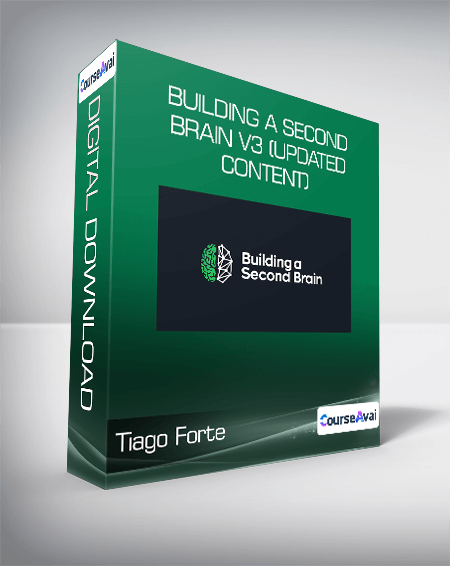
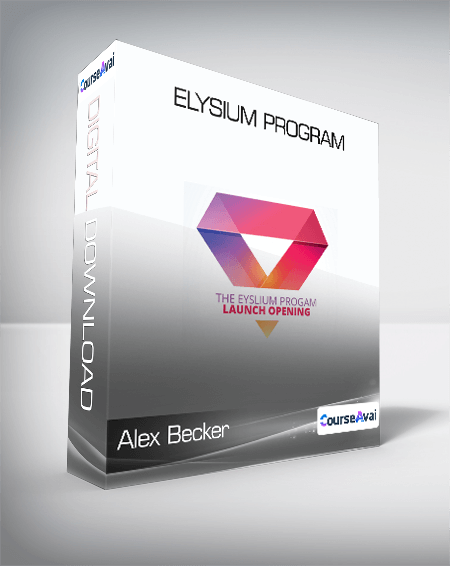
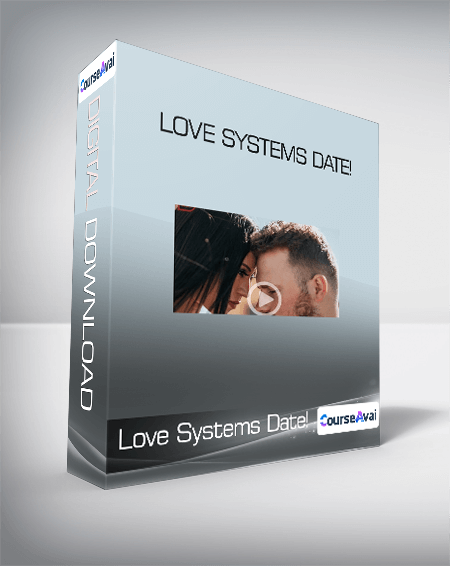
 Purchase this course you will earn
Purchase this course you will earn 
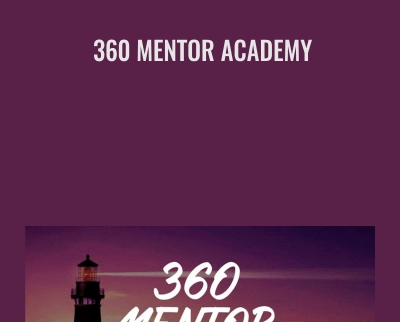
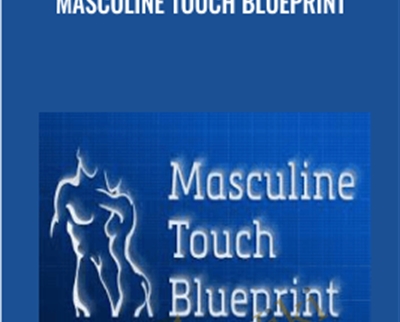
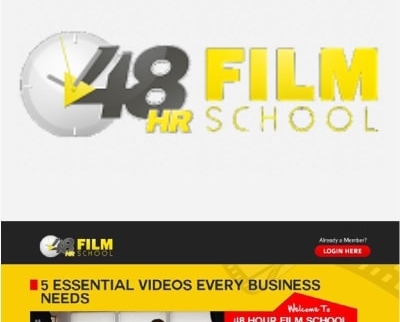
Reviews
There are no reviews yet.